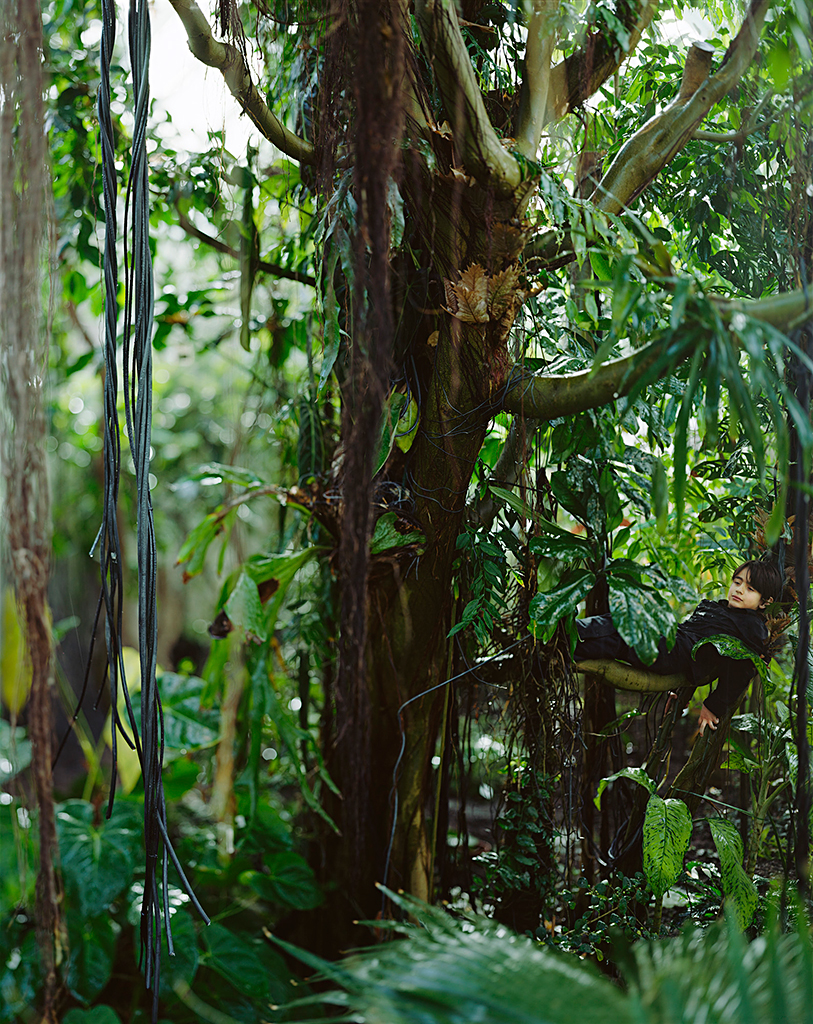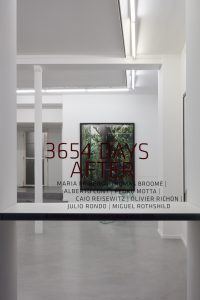[March 17-May 5, 2018] MARIA FRIBERG | THOMAS BROOMÉ | ALBERTO CONT | PEDRO MOTTA | CAIO REISEWITZ | OLIVIER RICHON | JULIO RONDO | MIGUEL ROTHSCHILD
This year marks a milestone for Bendana | Pinel Art Contemporain. We have been open for 10 years connecting continents and artists and providing them with an exhibition venue in Paris and in international artfairs.
To commemorate this important date we have decided to celebrate twice! 3564 Days after Part I (17 March-5 May 2018) and Part II towards the end of the calendar year.
Bendana | Pinel Art Contemporain is pleased to present in this first part of the celebration, a selection of early and more recent works by eight gallery artists,
Maria Friberg
Maria Friberg, photographer and video artist, questions preconceived notions of identity in contemporary society. The series ”Days of Eyes”, made at the time of the historic decision of the European High Court on ”the right to be forgotten”, represents human figures in lush tropical vegetation, among lianas, heavy and disturbing black cables merge with plant life.
Thomas Broomé
Thomas Broomé applies his mastery of perspective to represent illusory subjects constructed with words. Three recent works on computer circuits adopt this particular approach: ”Motion Detector”, ”Metal Detector” and ”Water Level Detector”. Several perception plans offer to the viewer an opportunity to reflect on the meaning of the work, for Broomé, colors are a real sensory experience.
Alberto Cont
Alberto Cont is a painter and sculptor. His colorful enameled stoneware sculptures attract the eye and evoke mixed attention of restraint due to their apparent fragility. In the series of ”Labyrinths”, the forms – that one feels like a pictorial gesture petrified as exhumed by another Pompeii – interlock in one another to give life to imaginary architectures. The work invites the eye to penetrate to get lost in the color.
Pedro Motta
This series of 2017, composed of three large format images, follows the protocol used by the artist in his works: digital manipulation and confrontation between natural and human elements. The boats come from the ”cemetery” of Roscanvel, Brittany, and are inserted in landscapes of the Niteroi region in Brazil. This work is the result of research on the movement of time and landscape.
Caio Reisewitz
Following the Brazilian photographer Marc Ferrez in the late nineteenth century, Reizewitz examines the same points of view and captures the same sumptuous scenery of Guanabara Bay in Brazil. ”Urca” is part of the pictorial tradition of landscape photography which is one of the facets of the Reisewitz work also very inspired by the history of modern Brazilian architecture.
Olivier Richon
A la suite du photographe brésilien Marc Ferrez à la fin du XIX ème siècle, Reizewitz examine les mêmes points de vue et saisit le même décor somptueux de la baie de Guanabara au Brésil. « Urca » s’inscrit dans la tradition picturale de la photographie paysagiste qui est l’une des facettes de l’œuvre Reisewitz également très inspirée par l’histoire de l’architecture moderne brésilienne.
Olivier Richon
The new series – made during an artistic residency in Japan – is inspired by the culture of this country, his thought and in particular ”Praise of the shadow”, essay written in 1933, by Jun’Ichirõ Tanizaki. The documentary bias of Richon’s still lifes shows his real interest in simple things, especially those dry, calm, silent and motionless algae represented in ”Konbu”
Julio Rondo
Rondo translates fractions of situations into translucent glass-painted compositions that can be seen as snapshots of the past. The pattern appears in a remembered form. Recovery of events, information and experiences of the past Rondo returns abstractly on figurative elements and condensed moments. In his work, the active exploration of the traces of what has been plays a primordial role.
Miguel Rothschild
Rothschild mixes nails, pins or straws with obscure photographs, he perforates his images, to set up a double dimension. The diamond presented in the exhibition is part of this artistic process. It represents this ambiguity between the wealth and violence present around the exploitation of this stone, as well as the paradox between its hardness and its apparent cracks.
Tel. > +33 1 42 74 22 97
Fax > +33 1 42 74 25 29
galerie@bendana-pinel.com
4 rue du Perche | 75003 Paris



